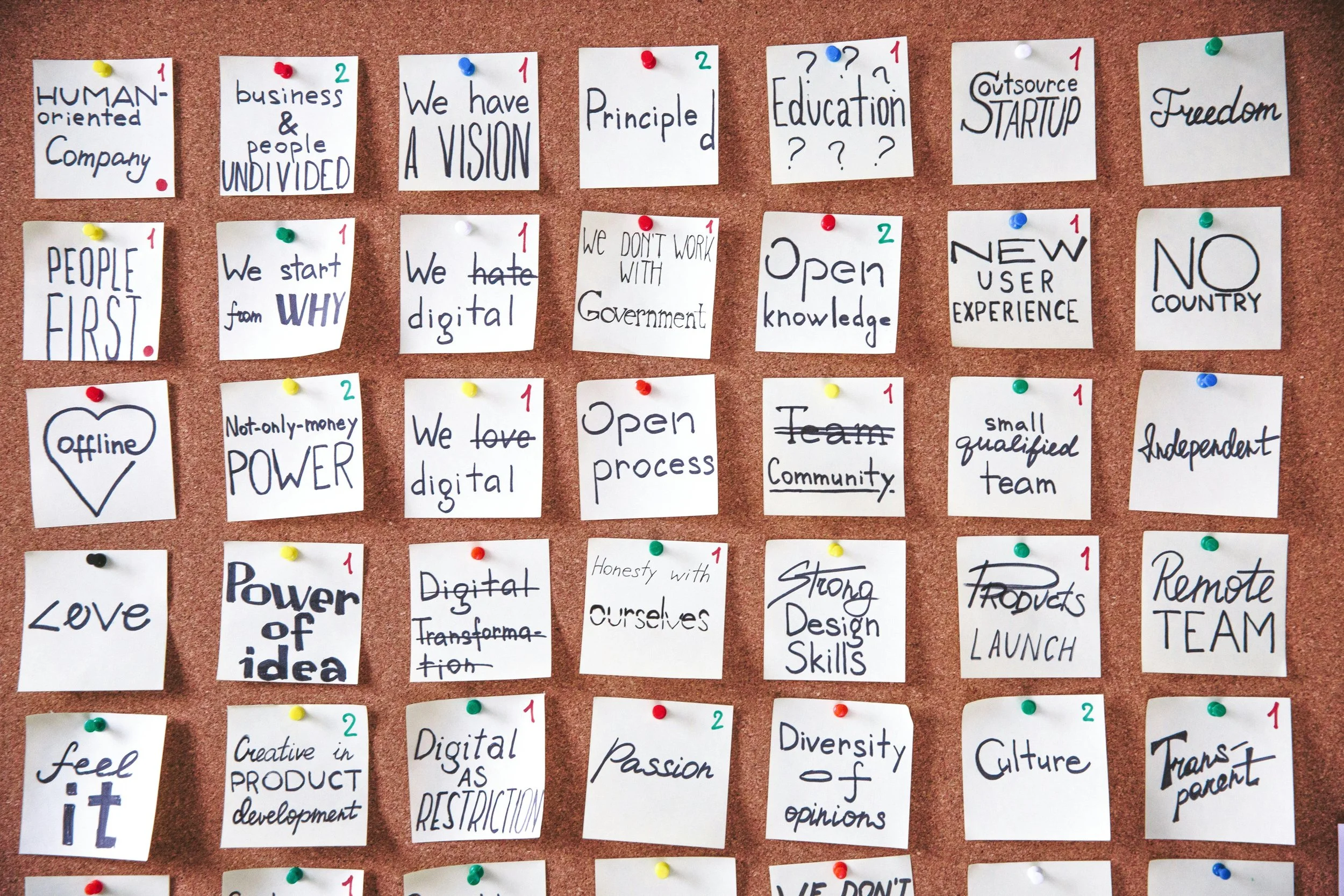The Visionary’s Trap: Why Big Ideas Can Stall Your Growth
If you’re a small business owner, creative entrepreneur, or running a family-owned business, chances are you’ve got no shortage of big ideas.
New services!
New marketing campaigns!
New income streams!
New hires!
New tech!
It feels exciting, like you’re always on the edge of the “next big thing.”
But here’s the trap: too many big ideas without structure can actually stall your growth.
Instead of moving forward, you spin your wheels.
The Visionary’s Trap, Explained
Visionary entrepreneurs thrive on creativity and innovation. But without systems to catch and organize those ideas, you can fall into a cycle of:
Starting new projects without finishing old ones
Constantly changing direction, leaving your team (or yourself) confused
Getting stuck in “planning mode” instead of execution mode
Feeling frustrated that growth isn’t matching your effort
What starts as inspiration often ends in overwhelm. And worse, it keeps you from scaling the business you already have.
Does this sound familiar?
Why Big Ideas Can Hold You Back
Let’s break it down:
1. Lack of Follow Through
A new idea feels urgent and exciting. But if you don’t have the systems to carry it across the finish line, it fizzles out and so does your momentum.
2. Overloaded Team (or Owner)
If you have employees, constant pivots create whiplash. If you’re solo, it leads to burnout. Either way, no one knows what to prioritize.
3. Scattered Resources
Time, money, and energy are finite. Spreading them across 10 half finished ideas means none of them get to reach their potential.
4. Lost Opportunities
While you’re chasing shiny objects, the core business that pays the bills gets neglected leading to inconsistent revenue and stalled growth.
How to Break Free From the Trap
Here’s how you can keep your visionary spark without sabotaging your growth:
1. Capture Your Ideas But Don’t Act Immediately
Keep a dedicated list for all these ideas. You can call it your idea parking lot, your someday list, or your later list. You can use a notebook, Trello board, Google Doc, whatever it is that you’ll consistently use. This gets ideas out of your head without derailing current priorities. Write it down then give it some space.
2. Run Ideas Through a Filter
Before starting anything new, ask:
Does this align with my bigger goals?
Do I have the systems/team to support it?
What will it cost me in time, money, or focus?
3. Prioritize Execution Over Ideation
Big ideas are useless without follow through. Choose one or two to fully implement before moving on. Break your idea down into 3 mini steps that need to happen to move the idea along.
Bonus Level Up: Think about the results (or effects) that would come from this idea and what would make you happy. Quantify that with a measurement that you can track. Keep it simple for now!
4. Build Systems to Support Innovation
This is where project management, documented workflows, and clear team roles come in. They turn vision into action and support your great ideas!
Example:
Let’s say you’re a bakery and your idea is to start a new social media series where you post one short video each week about how you create your product to give people a behind the scenes look.
You think about why it feels like a great idea to you: It helps you connect with your audience, gives them a glimpse into your processes and products, and has the potential to be great viral content!
It wouldn’t take much to implement that into your week. You would need a setup to film with your phone while you’re baking, good lighting, and a little extra time to make sure you get the shots you need. You’ll also need to edit your video a bit for social media. If you enjoy doing that and have the time to do it then great, if not, it’s an excellent task to delegate.
If it sounds feasible to you, you can then break it down into smaller tasks:
1. Select a product to feature and write a quick script for how you’d like the video to go.
2. Film the video.
3. Edit and post the video to social media.
Repeat each week!
The results you would like to see from this is more engagement in your social media content which could bring in more orders.
To quantify that: This project should increase social media engagement by 20%.
To track that goal you can review your social media engagement on each platform and compare across periods.
This is not something you’ll be able to see the results of instantly. It will take time and consistency to be able to track accurately.
At this level you want to make it as simple and actionable as possible. Once you get more comfortable with project planning you can more advanced and detailed. You can even start batching your tasks or projects to save time, but we’ll get into that in another post.
Why You Need Both Vision and Structure
Your creativity and ideas are what make your business unique. They’re your superpower.
But structure is the sidekick that makes those ideas work.
Without it, even the best idea will stall out.
With it? You can:
✅ Bring your vision to life consistently
✅ Free your brain from constant overwhelm
✅ Scale without burning out
✅ Lead with confidence instead of chaos
Ready to Turn Your Big Ideas Into Growth?
If you’re stuck in the Visionary’s Trap, you don’t need more ideas you need a system to execute the ones you already have.
That’s exactly what I help small business owners and entrepreneurs do.
Through my Clarity Intensive, we’ll:
Untangle the ideas in your head
Prioritize what actually moves the needle
Create a clear action plan so you can stop spinning your wheels
Let’s get your big ideas out of the trap and into reality.

